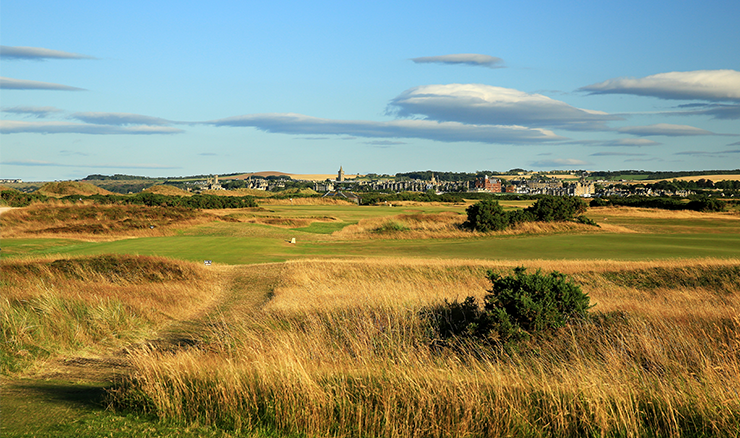14 Jul 2022 | Professional golf |
Clayton: The plain truth about the Old Course
by Mike Clayton

The great English golf course architect Harry Colt long ago proved himself no master of self-promotion when he called his magnificent Swinley Forest his “least bad course.”
This week The Open Championship comes home to the course Colt and his contemporary architects thought the finest on the game. Alister MacKenzie was so enamoured with the Old Course at St Andrews he called it the only first-class course in the game.
The back nine of the Old Course has some of the game’s greatest holes but every great course has what Colt might have described as its ‘least good’ hole. Rarely is it a bad hole.
More likely it’s simply one played across the least interesting piece of ground. In Australia the fourth at Kingston Heath is an example and perhaps the 14th at Royal Melbourne west another. Of course, there are plenty of courses where either would get the member’s vote as their best hole.
The hole most would label the ‘least good’ on The Old Course is the 320-metre ninth. It won’t get much attention this week and it’s hardly likely it will decide the championship, but it is hardly unimportant.
It’ll be reachable from the tee if the wind isn’t into their faces because, as twice champion Padraig Harrington has noted, “every tee shot is running 60 to 80 yards.
It’s flattish but far from free of the crumpled undulations making up the sandy dune land linking the sea to the farmland beyond. It’s land so perfect for playing golf that centuries ago men naturally adapted the game to the narrow strips of ground on the edge of the Scottish towns including Prestwick, North Berwick, Gullane, Dornoch and Troon. Had it not been for these unique stretches of land, would the game have even been invented?
Two tiny pot bunkers defend the centreline to the ninth hole, the first 240 metres from the tee and the second 260 metres away. Anyone building the hole now would be attacked by members for placing bunkers catching their ‘perfect drives’ which sort of misses the point of the measure of a good shot being it’s position relative to the one that follows.
We wonder, and should question, how the game descended into one where so often the hazards are placed down the sides of the fairways and the test is to simply hit between them.
One of the great lessons of the Old Course is that bunkers in the middle of fairways make for enduringly interesting golf and those here at the ninth refuse to be ignored. They can be avoided, and most will, but it doesn’t mean they aren’t a nagging presence in the back of the minds of every player.
The fairway short of the first one is a full fifty metres wide so playing short and eschewing their challenge is a perfectly legitimate way to attack the hole.
There is gorse (think ti-tree only worse – still unplayable but prickly) down the left to punish the hook but the green is big, quite flat and the R&A’s set-up man has admitted by Sunday they have used up the three interesting pin positions and simply resort to cutting the hole in the dead middle of the green for the final round.
A.W Tillinghast, a great American architect working in Colt’s time, addressed the problem an architect faces when confronted with a less than ideal piece of ground. “Often it is necessary to get from one section to another over ground not suited to the easiest construction but that troublesome hole must be made to stand right up in meeting with the others, and if it has not got anything about it that might make it respectable, it has got to have a quality knocked into it until it can hold its head up in polite society.”
The Old’s ninth is somewhat plain but it’s not ‘troublesome’ or remotely close to being a bad hole and centuries of golf at St Andrews has shown what might appear somewhat dull can indeed hold its head up.
The biggest mistake might be to try and make it something it’s not and the lesson for committees the world over is it’s important to distinguish between a bad hole and one simply not quite up to the standard of what comes either before or after. The back nine on the Old Course’s back nine has at least half a dozen of the game’s greatest holes and being in the supporting cast amongst that lot brings no shame on the ninth hole.
The only shame is the tee this week is on the New Course, a result of the modern ball going too far but that’s a question for another day – one that is hopefully not too far off.
Join our newsletter
Get weekly updates on news, golf tips and access to partner promotions.
Related News
Ruffels leads, Lee hunting more history at Evian Championship
Minjee Lee is chasing more major championship history after moving to within one stroke of the lead at the Amundi Evian Championship in France.
Roberts wins her way into US Women’s Amateur
Victoria’s Jazy Roberts has secured her place in next month’s US Women’s Amateur Championship by taking out the 123rd PNGA Women’s Amateur title.
No fears after tears for Kim at Evian Championship
Former amateur teammate Stephanie Kyriacou is confident Grace Kim will handle the heat of the last group of a major at the Amundi Evian Championship.


